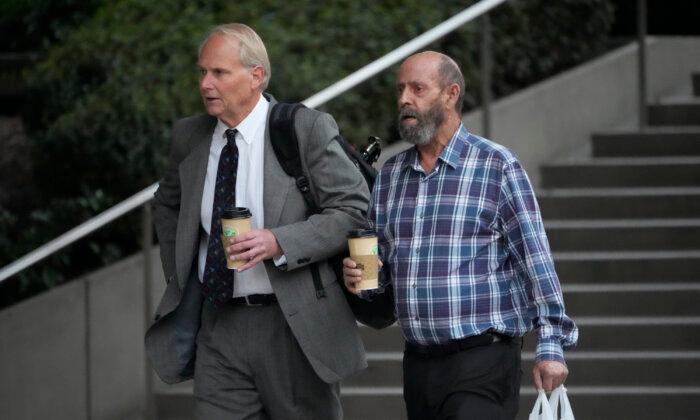LOS ANGELES—Federal prosecutors said Wednesday that the captain of a scuba dive boat should be held responsible for the deaths of 34 people killed in a fire aboard the vessel in 2019, while the captain’s defense attorneys said the boat’s owner is to blame in the deadliest maritime disaster in recent U.S. history.
The conflicting accounts were presented Wednesday during opening statements in the Los Angeles trial of Jerry Boylan, who is charged with one count of misconduct or neglect of ship officer, a pre-Civil War statute colloquially known as “seaman’s manslaughter” that was designed to hold steamboat captains and crew responsible for maritime disasters.
Mr. Boylan faces 10 years behind bars if convicted.
The 70-year-old has pleaded not guilty and denied any wrongdoing. Mr. Boylan sat silently in the courtroom as roughly two dozen family members filling three rows in the gallery heard about their loved ones’ last moments alive. Mr. Boylan and four crew members survived the Sept. 2, 2019, inferno aboard the Conception, while 33 passengers and a deckhand perished.
The fire spurred changes to maritime regulations, congressional reform, and civil lawsuits. Those on board the 75-foot (23-meter) boat included a new deckhand who had landed her dream job, an environmental scientist who did research in Antarctica, a globe-trotting couple, a Singaporean data scientist, and three sisters, their father and his wife.
The boat was anchored off the Channel Islands, 25 miles (40 kilometers) south of Santa Barbara, when it caught fire before dawn on the final day of a three-day excursion, sinking less than 100 feet (30 meters) from shore.

Throughout the excursion, Boylan failed to post the required roving night watchman and never properly trained his crew in firefighting, prosecutor Matthew O'Brien said.
The captain was “the master” of the vessel, Mr. O'Brien said, and the lives and safety of those aboard were his responsibility.
Mr. Boylan, after making a “mayday” call to the Coast Guard, was the first one to jump overboard, while 34 people were trapped in a bunkroom below deck by smoke and flames, the prosecutor said.
“The 34 people who were killed didn’t have a chance to jump overboard,” Mr. O'Brien told the jury. “They were waiting to be rescued. But nobody rescued them.”
While coroner’s reports list smoke inhalation as the cause of death, what exactly started the fire before dawn remains unknown.
Mr. Boylan’s federal public defender, Georgina Wakefield, blamed the boat’s owner, Glen Fritzler, who had designed the Conception and captained the vessel for more than four decades. Mr. Fritzler had trained Mr. Boylan himself when the latter joined as a deckhand in 1983.
Mr. Fritzler and his wife, Dana Fritzler, own Truth Aquatics, Inc., the company that operated the Conception and two other scuba dive boats.
Ms. Wakefield argued that Mr. Glen Fritzler was responsible for failing to train the crew in firefighting or other safety measures and creating an environment where no captain who worked for him posted a roving watch, calling it “the Fritzler way.”
“The same thing could have happened on any of the Fritzler boats,” she said, noting that the Coast Guard had certified Truth Aquatics’ records for years.
During the fire, Ms. Wakefield said, Mr. Boylan was thwarted by 15-foot (4.57-meter) flames consuming the Conception, making it impossible to reach those trapped below.
“You’re going to see that there was no way out—and there was no way in, either,” she told the jurors.
Mr. Fritzler’s attorneys did not immediately respond to a request for comment on Wednesday. The couple has not commented publicly besides an interview with Santa Barbara local TV station KEYT shortly after the fire.
“We’re all so saddened,” Mr. Glen Fritzler told the TV station’s reporter at the time.
Three days after the blaze, Truth Aquatics filed a lawsuit in U.S. District Court in Los Angeles under a pre-Civil War provision of maritime law that allows it to limit its liability to the remains of the boat, which was a total loss. The time-tested legal maneuver has been successfully employed by the owners of the Titanic and other vessels, and requires the Fritzlers to show they were not at fault.
That case is pending.

The National Transportation Safety Board blamed Mr. Boylan for the tragedy, saying his failure to post a night watchman allowed the fire to quickly spread undetected. The agency also faulted the Coast Guard for not enforcing the roving watchman requirement and recommended it develop a program to ensure boats with overnight passengers have a watchman.
Victims’ families have sued the Coast Guard in one of several ongoing civil suits.
At the time of the fire, no owner, operator or charterer had been cited or fined for failure to post a roving patrol since 1991, Coast Guard records showed.
The Coast Guard has since enacted new, congressionally mandated regulations regarding fire detection systems, extinguishers, and escape routes, though it has yet to implement others.







